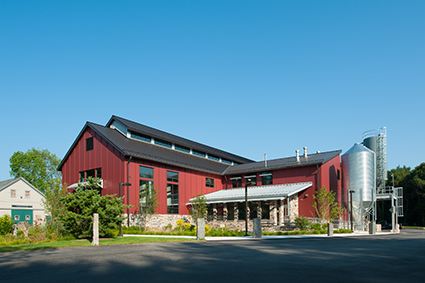The Background
Smuttynose is represented in Canada by Claude Lefebvre and the boys over at North American Craft. Now, for the most part, North American Craft is focused on their own core listings in the Double Trouble lineup featuring cans covered in the kind of stripe wearing burglars you might see in a Goddard directed escape film. There’s also the French Press Vanilla Stout which bears the bearded visage of the owner. The French Press cheerfully does what it says it’s going to.
It’s hard to get a sense of who North American Craft actually represents because those sons of guns aren’t keeping their website up to date. This is probably because they seem to be living out of the delivery van and sweet talking LCBO managers on a day to day basis. In the battle between “telling people what there is” and “making sure people can buy the thing” they have chosen the latter.
The fact is that Smuttynose was ripe for representation further afield. Back when the Robust Porter came out, I spoke to JT (their “minister of propaganda”) about the decision to start sending beer to Ontario. This is all the result of their expansion to the Towle Farm facility in Hampton, New Hampshire. The brewery opened in 2014 and their on-site restaurant, Hayseed, opened a couple of weeks ago. They’re expanding their distribution west to Cleveland and southwest to Tennessee. What you’re looking at in terms of expansion is about 22,500 BBL of immediate growth to near 65,000 BBL. The good thing is that Smuttynose’s reputation is such that the market will soak that up without much difficulty.
My perceptions of Smuttynose are twofold. They have more or less flown under the radar. They don’t have the cachet of a Brooklyn or a Dogfish Head. The flip side of that coin is the fact that they have had a lot of time to refine what they do before taking it to a larger audience. Smuttynose doesn’t make clunkers. The entirety of the lineup is rock solid. Currently there’s a lot of buzz about their Bouncy House Session IPA, but I’d be just as happy to try the two they started with: Shoals Pale Ale and Old Brown Dog. That’s the good thing about taking 20 years to get to 65,000 BBL. You build a repertoire.
The Beer
Smuttynose Imperial Stout comes in a 650 ml bomber and clocks in at 10% alcohol. Like the Robust Porter before it, it seems to have been shifted later in its seasonal release. At the LCBO, it’s a flat $9.00.![IMAG0897[1]](https://saintjohnswort.ca/wp-content/uploads/2015/03/IMAG08971-170x300.jpg)
Nosing this beer is a little like peering over the edge of a well. It’s not only deep, but wide. There’s the slightly burnt character that you get from roasted barley at bottom, but the middle gives the aroma a sense of proportion with its toffee and chocolate raisin and light espresso. If you look at the website, you’ll see that the malt bill actually allows for that with different levels of caramel malts playing in the middle starting with Munich and bottoming out at Crystal 120. The result is prodigious sweetness, but it’s balanced by 107 BU of Warrior, Cascade, Sterling and Columbus, the mixture of which comes through as pine sap and herbs. There is also coriander, and I suspect that’s in the aroma as an earthy twang. There is no more room for anything else in here. There’s something in every possible space and despite that heavy load it manages balance.
The Arbitrarily Chosen Score Based On Various Criteria
It’s pointless for me to rate this beer. It’s objectively excellent. It has a 100 on Ratebeer and Imperial Stout is a hard fought category. Instead I’m going to bring back the sometime feature:
Experts will tell you that you should serve Imperial Stout fairly warm, somewhere in the neighbourhood of 55-60 degrees. They are certainly right that that is the optimal temperature for an Imperial Stout to present its aromas.
What I’d like you to try is to open this bottle directly out of the fridge and make notes on it starting from that point. It’s a big beer and it’ll probably take you an hour to drink. During that time, it’ll warm up. I think that you can learn more about a beer by trying it in different formats than through the purely libertine act of consumption. As it warmed up to the appropriate serving temperature, even a foot and a half away from the snifter there was a sudden suffusive aroma of Haribo gummy cola bottles. The sweetness expanded by that note and I suspect the coriander is responsible.
Don’t cheat yourself out of sensory data by strictly adhering to the rules.

![IMAG0899[1]](https://saintjohnswort.ca/wp-content/uploads/2015/03/IMAG08991-170x300.jpg)